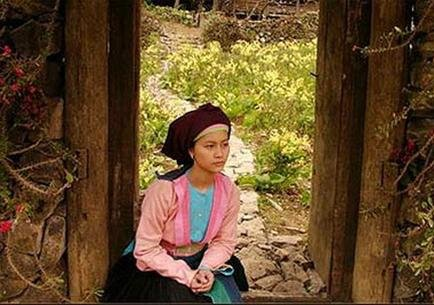 Life & Style
Life & Style

Khổng Quốc Tuân, the director of tourism in Hải Dương Province once told us that “ Hải Dương has not much, but we have our hearts with which to welcome all of you”. But he was too modest.
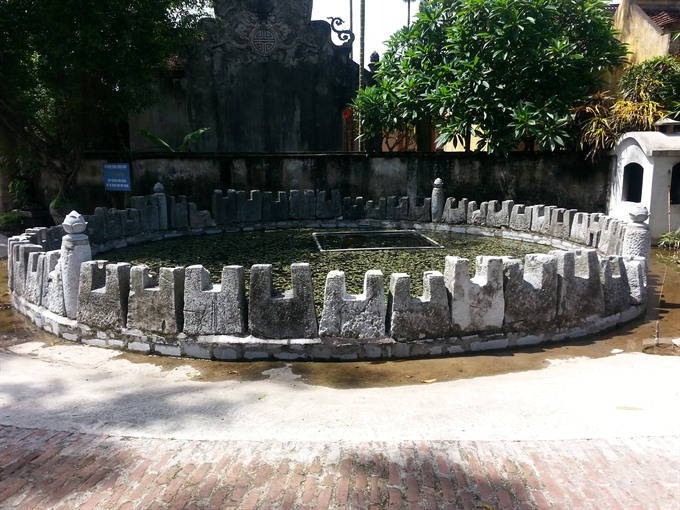 |
| Venerable Thích Thanh Thắng decorated the Động Ngọ Pagoda’s well with nicely-sculptured stone blocs. — VNS Photo Bạch Liên |
By Vương Bạch Liên
Khổng Quốc Tuân, the director of tourism in Hải Dương Province once told us that “ Hải Dương has not much, but we have our hearts with which to welcome all of you”. But he was too modest.
The province on the northeastern outskirts of Hà Nội has lots to offer those seeking a day trip from the capital or a weekend getaway.
Thanh Hà District, for example, is one of Việt Nam’s most famous regions for growing lychee that ripen around May and early July. In fact, the fruit are considered to have originated from this area.
Several domestic travel companies are planning to offer new tour itineraries to Thanh Hà’s lychee gardens and ancient pagodas. At only about 60 km from Hà Nội, the district is easily accessible by motorbike, too.
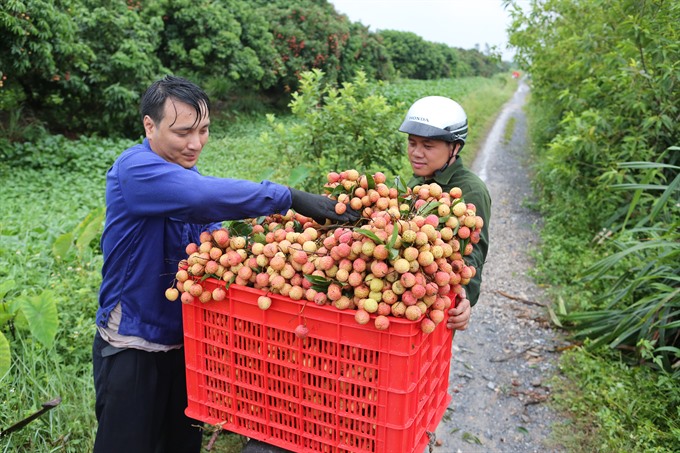 |
| Farmers in Thanh Hà bring lychee to the market. — VNS Photo Trương Vị |
A must-see on this jaunt is an “ancestral” 19th-century lychee tree, which broke the record last year to become the oldest of its species in Việt Nam. The tree was planted in Thúy Lâm town of Thanh Sơn commune by Hoàng Văn Cơm (born in 1848), who brought home three lychee seeds from a fest he attended in neighbouring Hải Phòng Province hosted by Chinese people. He planted the Chinese seeds in his garden. They all grew well, and one of them, which is now the oldest such tree in the country – produced delicious fruit. Cơm decided to clone the special tree, taking saplings and spreading them across the village.
Since then, Thanh Hà lychee have gained popularity and become a local staple. The district has more than 1,000 hectares of lychees conforming to the VietGap standard and has exported the fruit to the US, the EU and Japan.
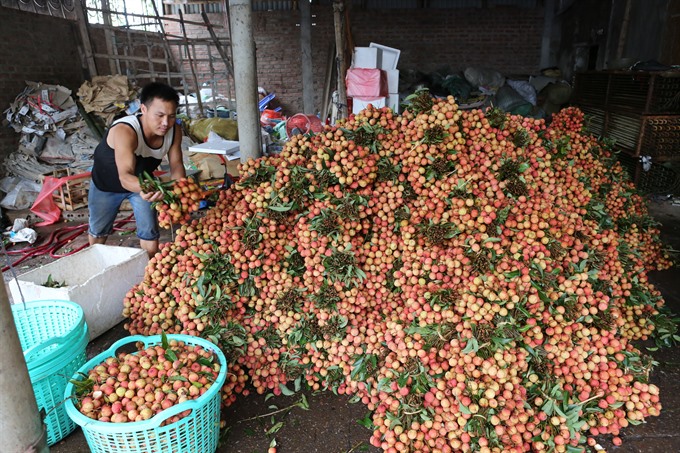 |
| Lychee has made the name of Thanh Hà in Hải Dương Province. - VNS Photo Trương Vị |
“The ancestral lychee tree is the pride of our family and we do our best to preserve it,”said Hoàng Văn Lượm, a sixth generation direct descendant of Hoàng Văn Cơm.
Take you time visiting the lychee gardens of local families, where the fruit can be bought directly after tasting them - and for far less than you would spend at the supermarket. This year, a kilo picked at the gardens goes for VNĐ30,000 (US$1.3), compared to VNĐ50,000 at the market. And more importantly, you know for sure where the fruits are from.
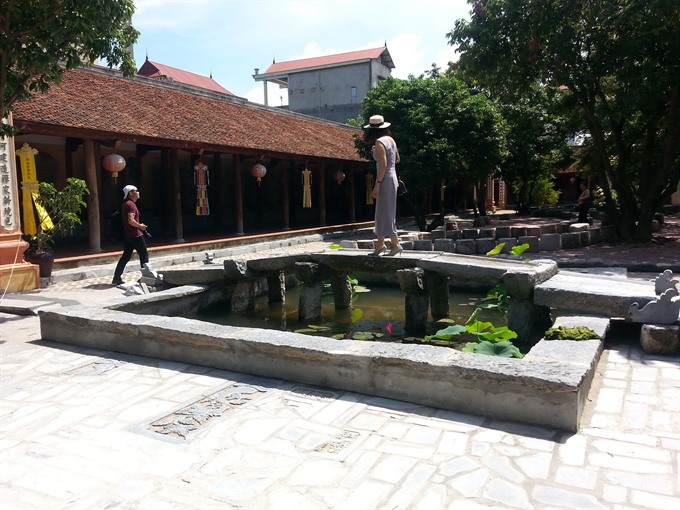 |
| The stone bridge in the Động Ngọ pagoda attracts lot of tourists. —VNS Photo Bạch Liên |
After the gardens, it’s time to visit several old pagodas nearby.
Động Ngọ Pagoda in Tiền Tiến Commune is one of the oldest pagoda in Hải Dương Province, built during the Đinh Dynasty more than 1,000 years ago.
Its most significant feature is the nine-storey lotus tower (cửu phẩm liên hoa, in Vietnamese), a unique Buddhist artwork dating to 1692. Currently, there are only three such rotary wooden works in Việt Nam, in three old pagodas.
This artwork originates from a ritual of praying and rotating an object - a pendulum or a bell or this lotus tower - at the same time. This ritual is believed to allow prayers and wishes to be delivered to heaven. The tower symbolises the spiritual levels that Buddhists have to practice from the first storey to the ninth.
On each storey of this 5m high lotus-shaped tower there are 18 wooden Buddhist statues sitting on lotus. Besides its artistic values, the tower conveys a message of compassion, altruism and charity and shows the development of the Trúc Lâm Yên Tử Zen Sect in Việt Nam during the 17th-18th centuries.
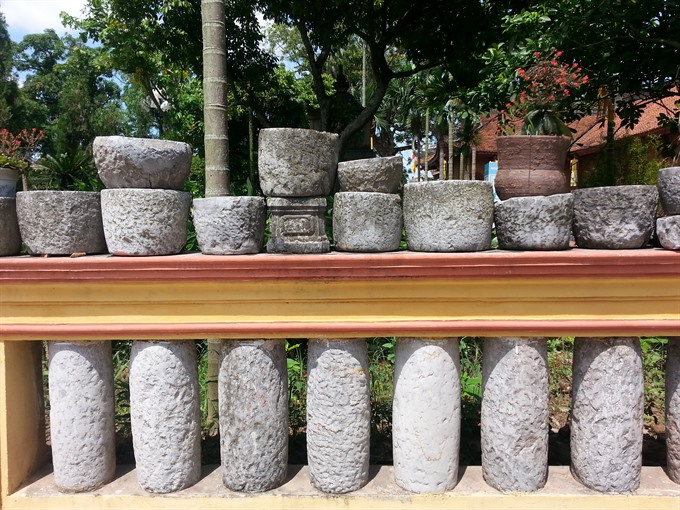 |
| A collection of stone mortar in the Động Ngọ pagoda of Most Venerable Thích Thanh Thắng.— VNS Photo Bạch Liên |
A quick visit to the pagoda also reveals newly-built architectural works in stone. You’ll see two round wells decorated with various stone blocs, as well as stone mortars in the yard of the pagoda. You can also cross a 3m-long stone bridge at a corner of the pagoda. Stop and gaze in awe at the 30m-long map of Việt Nam made of 300 stone mortars. The Most Venerable Thích Thanh Thắng travelled near and far to look for stone mortar and stone blocs to create those original architectural works.
Do not miss the opportunity to visit the ancient and romantic Bạch Hào Pagoda in Thạch Xá commune, overlooking the Cửa Chùa River. The 11th century Lý Dynasty edifice is known as one of the most poetic pagodas in the Red River Delta.
And if you happen to be there on the 6th day of the Lunar New year, drop by one of the pagoda festivals featuring such events as duck catching, rice cooking, and traditional farmer boat race— VNS









